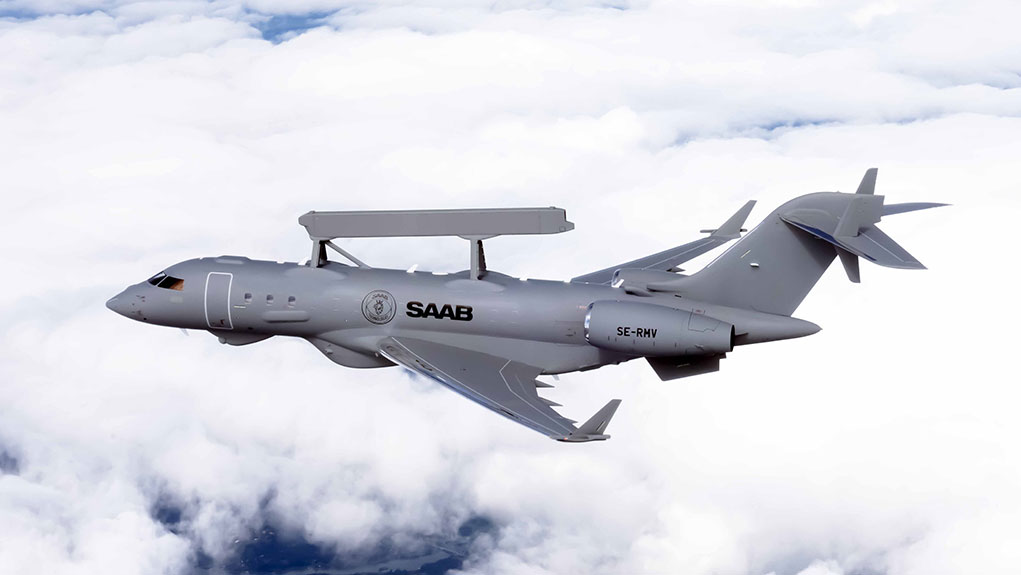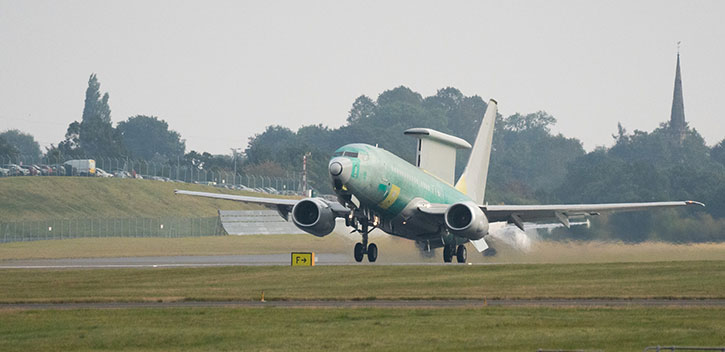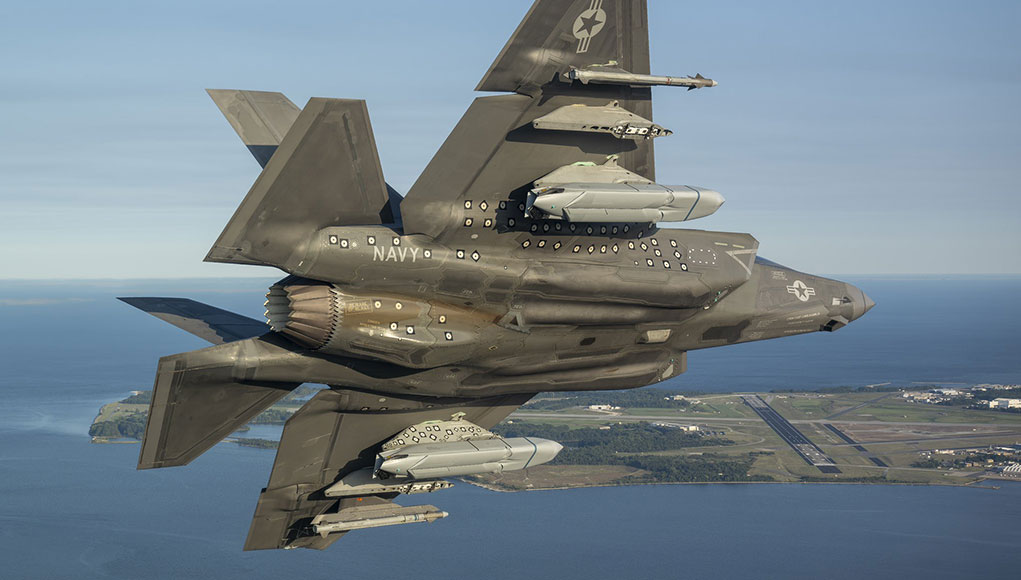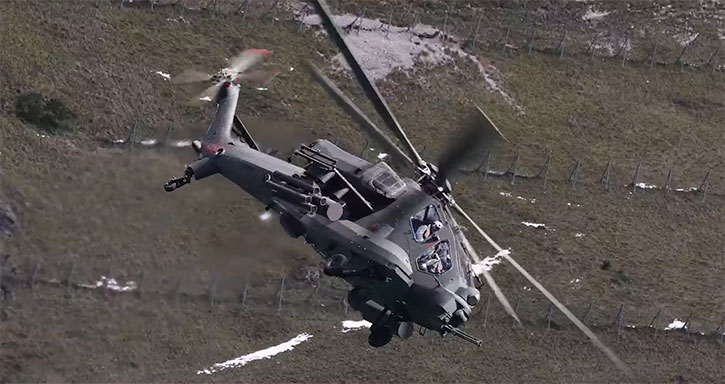Northrop Grumman’s B-21 Raider program is making significant strides in both flight testing and production, marking a new era in strategic bomber development. The Combined Test Force (CTF), comprising Northrop Grumman and Air Force personnel, is conducting a comprehensive flight test campaign at Edwards Air Force Base to evaluate the aircraft’s capabilities.
Early feedback from test pilots has been overwhelmingly positive. Chris “Hoss” Moss, a B-21 Raider test pilot, noted that the aircraft’s handling qualities are exceeding expectations based on simulations.
The flight test program rapidly expands the B-21’s operational envelope, executing multiple test events within a week. According to Northrop Grumman, this efficiency is attributed to its digital ecosystem, which allows for quick analysis of test data and swift implementation of updates.
In parallel with flight testing, Northrop Grumman has completed static testing to verify the B-21’s structural design and has begun fatigue testing to simulate a lifetime of flight conditions. The company is also scaling production, utilizing advanced manufacturing techniques and digital tooling across the factory. Innovative approaches, such as augmented reality tools and advanced robotics, are being employed to enhance efficiency and accuracy in the production process.
This strategy of building the first test aircraft, like the production model, aims to ensure a smooth transition to full-scale production and facilitate future technology insertions to keep the B-21 ahead of emerging threats.

Saab Delivers Fifth GlobalEye Aircraft to UAE
The UAE has received the fifth and final GlobalEye Airborne Early Warning and Control (AEW&C) aircraft built by SAAB. to the United Arab Emirates (UAE). GlobalEyes delivery spanned over four years, showcasing Saab’s efficiency in fulfilling the development and manufacturing program within less than ten years.

Boeing Completes First Flight of UK E-7 Wedgetail for Royal Air Force
Boeing has successfully conducted the first flight of the UK’s E-7 Wedgetail aircraft, marking a significant milestone in developing the Royal Air Force’s (RAF) future Airborne Early Warning & Control fleet. The functional check flight, performed by a Boeing flight-test crew, took place at Birmingham Airport, initiating the program’s test and evaluation phase.
The E-7 Wedgetail, based on a modified 737 NG airframe, is equipped with advanced capabilities, including a Multi-role Electronically Scanned Array (MESA) radar sensor. This combat-proven system provides 360-degree coverage, enabling long-range detection and tracking of multiple airborne and maritime threats simultaneously.
Three 737 NG aircraft are undergoing modification in the UK, with over 100 personnel working on the project at STS Aviation Services in Birmingham. The E-7 fleet will be based at RAF Lossiemouth in Scotland, where infrastructure preparations are nearing completion. The RAF participates in a trilateral agreement with the Royal Australian Air Force and U.S. Air Force for cooperative Wedgetail operations.

L3Harris Advances Hypersonic Propulsion Technology
L3Harris Technologies has announced significant progress in developing operational hypersonic propulsion systems, building on over 14 years of advancements since the historic X-51A WaveRider flight. The company has demonstrated the propulsion technology and production capacity needed to field operational hypersonic systems for warfighters. The Successful demonstration of scramjet technology through the Hypersonic Air-breathing Weapon Concept (HAWC) program and continued advancement of 3D-printing technology for hypersonic applications via programs like GAMMA-H, are among the achievements, along with a significant reduction in production time (75%), manufacturing costs (75%), and number of parts (95%) for scramjet engines compared to first-generation designs and the Development of dual-mode air-breathing scramjets that can operate as both subsonic combustion ramjets and scramjets.
L3Harris is aligning its efforts with the Department of Defense’s National Hypersonics Initiative 2.0, which aims to accelerate hypersonic technology development affordably and responsibly.

US Navy Begins LRASM integration with F-35C
AGM-158C LRASM flight testing begins on F-35C. As part of ongoing integration efforts, the Pax River F-35 Integrated Test Force team flew two days of test flights to evaluate flutter, loads, and flying qualities with two AGM-158 loaded on external stations.

Leonardo’s AW249 Completes First Operational Exercise
Leonardo’s new AW249 attack helicopter, dubbed FENICE, has successfully participated in its first operational exercise, marking a significant milestone in its development. The new helicopter was integrated into the “Stella Alpina 2024” operation’s ‘tactical bubble,’ demonstrating its advanced capabilities in a multi-domain operational environment during the exercise.

Nigeria Considers Acquiring Four Prachand Light Combat Helicopters from India
Nigeria is poised to become the first export customer of India’s indigenously developed Prachand Light Combat Helicopters (LCH). The Nigerian Air Force has shown interest in procuring four advanced attack helicopters, marking a significant milestone in India’s defense export efforts. The Prachand LCH, developed by Hindustan Aeronautics Limited (HAL), is a multi-role attack helicopter designed for high-altitude operations. This potential sale to Nigeria represents a significant step forward in India’s ambition to expand its defense exports.




















